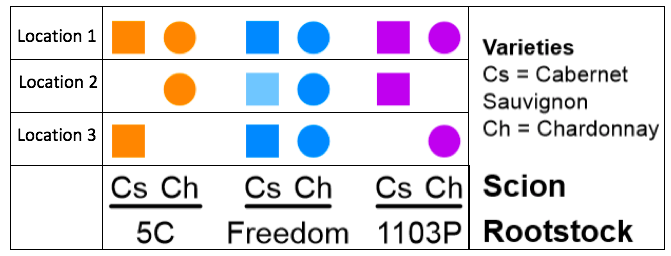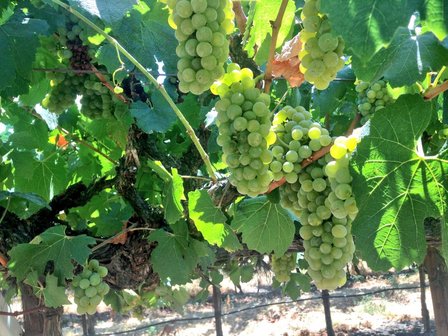Aim 2 assesses environmental influence on root-shoot communication by measuring six rootstock-scion combinations across three Central Valley California vineyards. We are exploring rootstock, scion and environmental interactions by measuring gene expression and a suite of phenotypes in the most widely planted red and white varietals ‘Cabernet Sauvignon’ and ‘Chardonnay’ scions, which are grafted onto ‘5C,’ ‘Freedom’ and ‘1103P’ rootstocks in this region.


